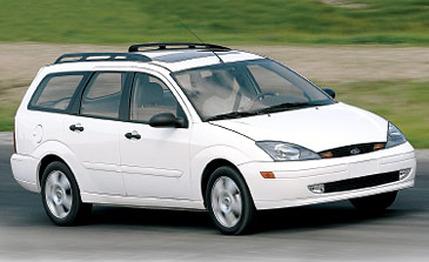 Short Take Road Test
Short Take Road Test
Bless CARB's collective bureaucratic heart. Really.
Oh, sure, California's Air Resources Board frequently enacts nonsensical rules, such as the windmill-tilting mandate in 1990 that electric vehicles constitute 10 percent of California's new-car fleet by 2003, and its even kookier forecast that such vehicles would likely cost only $1350 more than similarly sized gas-powered cars. But in amending that ludicrous 1990 ruling over the years, CARB has come around to encouraging sales of so-called Partial Zero-Emission Vehicles, or PZEVs, some of which offer vastly better performance than their more polluting forebears, this Ford Focus being one such case in point.
To qualify as a PZEV, a vehicle must meet Super Ultra Low-Emission Vehicle standards (SULEV) at the tailpipe; virtually eliminate all fuel-system evaporative emissions; and guarantee that these systems won't degrade over 15 years or 150,000 miles. Compared with the federal emissions standards in effect through 2003, SULEV cuts hydrocarbon emissions by 97 percent, carbon monoxide by 76 percent, and oxides of nitrogen (NOx) by 97 percent.
To achieve these immaculate emissions, Ford engineers started with a 2.3-liter version of Mazda's MZR DOHC four-cylinder engine. A friction-welded plastic intake manifold was designed with a butterfly valve in each of the four runners to restrict airflow at low speeds and induce turbulence. This fosters better mixing of the air with the fuel, which is sprayed through new four-hole injectors, so the droplets are smaller and fewer of them splash onto the intake port walls (which can lead to incomplete combustion and stumbling at low speeds). The valves and the tappets are precision-matched so they don't need adjustment shims (there are no hydraulic lifters), and the lobes on the chain-driven cams are cold-hardened for long life, ensuring that the valve clearances remain in spec for 150,000 miles. The pistons, the rings, and the connecting rods are 15 percent lighter and produce less friction for quieter, more efficient, and freer-revving operation (overall, the 2.3-liter weighs 40 pounds less than the Zetec 2.0-liter). Finally, electronically controlled exhaust-gas recirculation helps reduce NOx formation in the cylinder, while a catalyst located very near the exhaust ports cleans up the rest.
Technically, only the 2.3-liter Focus sold in California or one of the northeastern CARB-regulated states is officially classified as a PZEV. In other states, the hardware and the tuning are identical, but the federal eight-year/80,000-mile emissions warranty applies. The actual tailpipe emissions of any 2.3-liter Focus will be slightly higher when operating on any fuel that doesn't meet California's squeaky-clean standards.
If your Earth First! neighbors remain unconvinced that any internal-combustion engine can ever approach the godliness of a pure electric drivetrain, run these stats by them: Compared with a battery-driven car juiced up by energy generated on California's electric grid, this Focus produces a scant 0.001 gram per mile more hydrocarbons and other smog-forming gases, but it emits 88 percent less NOx.
If they are still unconvinced, rev the engine, dump the clutch, and leave them choking on a cloud of acrid tire smoke, marveling at the PZEV engine's abundant output: 145 horses at 5750 rpm and 149 pound-feet of torque at 4250 rpm. These figures slot neatly between the Zetec's 130/135 and the SVT engine's 170/145.
And at the track, this workaday wagon with its five-speed stick nearly matched the performance of our quickest SVT Focus, dispatching the 60-mph dash in 7.8 seconds (0.1 second behind the SVT) and slipping through the quarter-mile in 16.2 seconds at 86 mph, 0.3 second and 3 mph off the SVT's pace. We've never tested a manual Zetec wagon, but our last five-door hatch, which was 154 pounds lighter, would have gotten a deep lungful of the PZEV's harmless fumes at a drag strip, finishing a second behind and 6 mph slower. What's remarkable is the price premium for the 2.3-liter engine-it's just $115 in a sedan or hatch (the 2.3 is standard in the wagon, unless you're a fleet buyer).
So a PZEV delivers three-quarters the performance of an SVT Focus at just three percent of the SVT's price premium. Now that's what we call easy being green.